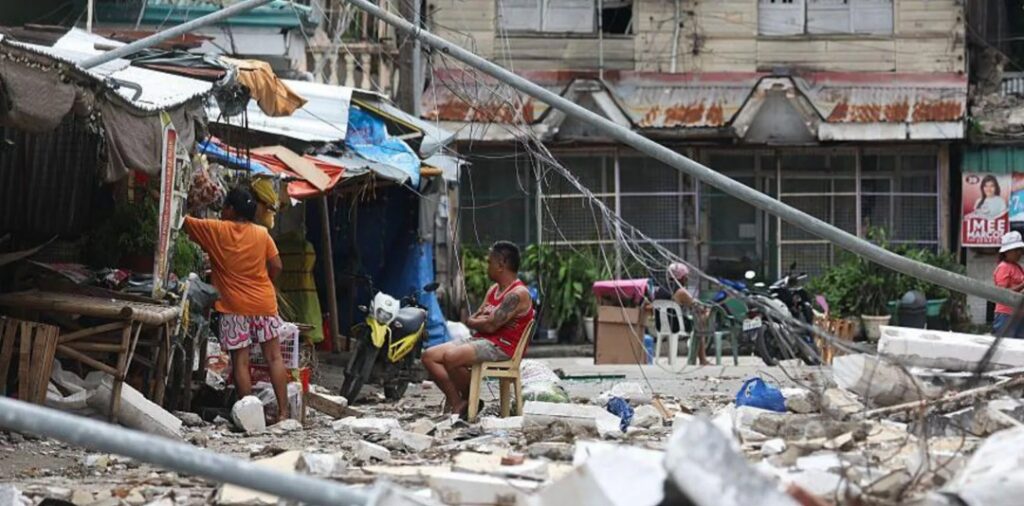
Crystal Dike
Cebu awoke on Wednesday to scenes of devastation after a 6.9-magnitude earthquake tore through the province late Tuesday night, leaving at least 69 people dead and dozens injured. Authorities quickly declared a state of calamity, as frightened families poured into the streets, too terrified to return indoors.
“It was like the ground was roaring,” recalled Maria Gomez, a mother who spent the night huddled with her children in Bogo City, the town worst hit by the disaster. “The walls shook, people screamed, and then there was silence… only children crying in the dark.”
Bogo, closest to the epicentre, has borne the brunt of the catastrophe. Rows of cadaver bags lined the streets by morning as makeshift tent hospitals struggled to cope with the surge of wounded survivors. Local officials, overwhelmed, issued desperate appeals for volunteer doctors and medics to join rescue efforts.
The quake left scars across northern Cebu: bridges collapsed, roads split apart, and power lines dangled dangerously, hampering aid operations. In San Remigio, tragedy struck during a basketball game when panic sent spectators fleeing. Nearly 20 people were injured, one fatally.
For some, the earthquake reopened old wounds. Seven of the victims lived in a relocation village originally built for survivors of Typhoon Haiyan, the catastrophic 2013 storm that killed more than 6,000 people.
As night fell again, a 4.7-magnitude aftershock rattled Cebu and nearby Leyte, sparking new panic. Though no casualties were reported, many families chose to sleep outdoors once more, clutching their children as aftershocks rippled through the ground.
Cebu’s archbishop has advised worshippers to avoid churches until structural assessments are complete, after footage showed the partial collapse of a centuries-old Catholic tower. “Faith is strong, but safety must come first,” he urged.
The disaster comes barely a week after Tropical Storm Bualoi and Typhoon Ragasa battered the Philippines, killing more than a dozen people and testing the resilience of emergency services already stretched thin.
Officials fear the death toll could rise in coming days as rescuers struggle to reach remote areas cut off by landslides and buckled roads. “We are racing against time,” said one provincial disaster officer. “People are trapped, and help is slow because access is destroyed.”
For survivors like farmer Jose Ramirez, the earthquake is yet another crushing blow. Standing in front of the rubble that was once his home, he shook his head. “We survived Haiyan. We survived the typhoons last week. Now this. How much more can Cebu endure?”
Experts warn that the tragedy is far from over. The Philippines, perched on the volatile Pacific Ring of Fire, is among the world’s most disaster-prone nations, frequently battered by both earthquakes and typhoons. Officials cautioned that the current death toll may rise as rescue teams push deeper into remote areas still cut off by landslides and damaged infrastructure.
